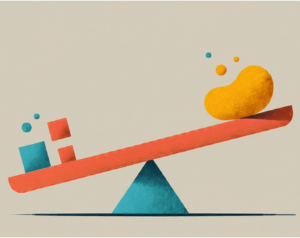The ability to prioritize tasks effectively can make the difference between success and overwhelm. But have you ever wondered how people managed their priorities throughout history? Let’s dive into the fascinating evolution of task prioritization and explore how it can improve your productivity today.
Ancient Approaches to Priority
Believe it or not, the concept of prioritization isn’t new. Ancient civilizations had their unique methods for managing tasks and time. In ancient Rome, for instance, the statesman Cicero emphasized distinguishing between urgent and important matters. He famously said, “The wise man does at once what the fool does finally.” This principle of addressing critical tasks promptly remains relevant to this day.
In medieval monasteries, monks used intricate schedules to balance their spiritual duties with practical work. They divided their day into specific time blocks for prayer, study, and labor – an early form of time-blocking that many productivity gurus still swear by today.
The Industrial Revolution and the Birth of Modern Productivity
As we entered the industrial age, prioritization became increasingly crucial. Factory owners and managers needed to optimize workflows and maximize efficiency. This led to the development of scientific management principles by Frederick Taylor in the early 20th century.
Around the same time, President Dwight D. Eisenhower developed what’s now known as the Eisenhower Matrix. This simple yet powerful tool helps categorize tasks based on urgency and importance. Eisenhower wisely noted, “What is important is seldom urgent, and what is urgent is seldom important.” This insight continues to guide many in their prioritization efforts.
Modern Prioritization Techniques
Fast forward to today, and we have a wealth of prioritization methods at our fingertips. Some popular techniques include:
1. The ABCDE Method: Rank tasks from A (most important) to E (least important).
2. The Pareto Principle (80/20 Rule): Focus on the 20% of tasks that yield 80% of results.
3. Time-blocking: Schedule specific time slots for different types of tasks.
4. The Ivy Lee Method: At the end of each day, list the six most important tasks for the next day, prioritize them, and work on them one at a time, focusing only on the most important task until it’s complete.

Why Prioritization Matters
In a world where everything seems urgent, mastering prioritization can be a true game-changer. Here’s how it can revolutionize both your work and personal life:
– Maximize Your Productivity: By directing your attention to the tasks that have the most significant impact, you can accomplish much more in less time. Prioritizing these key tasks ensures that your efforts are focused where they matter most, leading to greater overall efficiency and effectiveness in your work.
– Reduce Overwhelming and Stress: A clear plan for what needs to be done first can turn a chaotic day into a manageable one. Start by listing your tasks and identifying the most pressing ones; it’s amazing how much stress melts away when you have a clear path forward.
– Make Smarter Decisions: When you prioritize effectively, you’re better equipped to allocate your time, energy, and resources where they’re needed most. This leads to better decisions and outcomes, whether at work or in personal projects.
– Achieve a Better Work-Life Balance: Efficient prioritization isn’t just about getting more work done—it’s about freeing up time for the things that matter to you personally. By focusing on what’s important, you can carve out space for hobbies, family, and relaxation without sacrificing productivity.

Planndu’s Prioritization System
Now that we understand the importance of prioritization, let’s explore how Planndu can help you master this essential skill.
1. Input your tasks: Start by entering all your tasks into the app, whether big or small.
2. Set Priorities: Easily organize your tasks by using intuitive drag-and-drop sorting to quickly adjust your priorities. Alternatively, on the task screen, you can select the flag icon to choose your priority level.
3. Color code: You can also prioritize your tasks using our color-coding system, which makes it easy to visually distinguish between tasks based on their urgency or importance.
As author Stephen Covey wisely said, “The key is not to prioritize what’s on your schedule, but to schedule your priorities.” Planndu makes this process seamless and intuitive.

From ancient Rome to the digital age, the importance of prioritization has stood the test of time. Prioritization is, in essence, the art of saying yes to what truly matters. So, are you ready to revolutionize your productivity? Download Planndu today and start prioritizing effectively, it’s not about doing more – it’s about doing what matters most.




